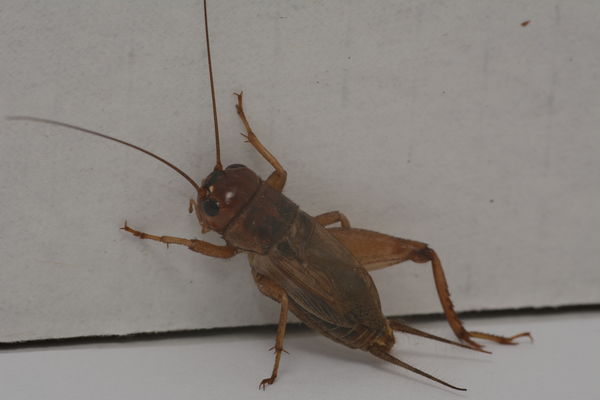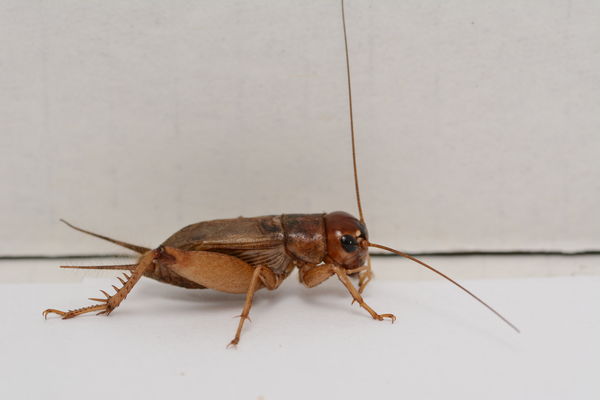Is this a Problem with Extension Tubes in Macro Photography?
Aug 30, 2020 06:23:39 #
Recently I experimented with a 30 mm Meike extension tube interposed between the camera body and the 100 mm macro lens to see whether I could get satisfactorily magnified images. What I found was that those images shot with the extension tube attached all had a definite haziness or glare, as if the photos had been taken through a window pane. Furthermore, the contrast was not good, and the colors appeared less saturated, even faded. I then removed the 30 mm extension tube and reshot the photos, which all turned out fine. Yes, the photos taken through the extension tube were a bit underexposed, but even accounting for that, those pics did not look as saturated or as fogless as those taken without the tube. I’m seeking the input of UHH’ers regarding why this is happening. Is some light reflecting off the walls of the extension tube and not getting absorbed before it hits the sensor? How does one go about fixing this problem? The first three photos were taken with the 30 mm extension tube attached and show general haziness. The 4th photo was taken with the macro lens alone and looks normal with no haze and better color saturation. Thanks yo’all.
NY
NY
Aug 30, 2020 06:33:48 #
Possibly, the 3rd party tubes are not communicating with the lens and / or camera correctly. But, there's nothing but air between the lens and the camera with the tube installed. From the positions of the histograms of the images, you can see the relative exposure / brightness of the images. Given your use of manual exposure, try pushing the exposure to the right when the tube is installed.
Aug 30, 2020 07:08:29 #
Aug 30, 2020 07:23:36 #
I have experienced this when using 3 tubes stacked together. Some consider it is light intrusion through the joints and I did solve it by covering the tubes with a thin leatherette material and taping it tightly. Others also consider it is reflections within the tubes and have lined their tubes with a dark material but I am nervous of doing that as the tubes are not separated from the sensor and surrounding areas - I worry about fibres entering the camera. Also, don't forget tubes cut out some light and can make images darker so a correction in exposure needs to be considered. The same question posted in the True Macro Section may bring better solutions.
Aug 30, 2020 07:52:12 #
CHG_CANON wrote:
Possibly, the 3rd party tubes are not communicating with the lens and / or camera correctly. But, there's nothing but air between the lens and the camera with the tube installed. From the positions of the histograms of the images, you can see the relative exposure / brightness of the images. Given your use of manual exposure, try pushing the exposure to the right when the tube is installed.
Thanks for the thought. I thought about exposure issue, but the cloudy haze seems to be an additional problem on top of underexposure. In any event, I'll check histo before I shoot next time and push it to the right if need be.
NMY
Aug 30, 2020 07:54:01 #
Using extension tubes changes the f number of the lens thus reducing exposure. The f number is the distance from the optical center of the lens to the focal plane divided by the diameter of the aperture. When using extension tubes you move the optical center of the lens away from the focal plane thus changing the f number. You need to compensate for this change when it becomes large enough. When using a 100mm lens and a 30mm extension tube f 14 becomes f 18, about half a stop.
Aug 30, 2020 07:54:26 #
LWW wrote:
DEPTH OF FIELD.
Thank you much for your interest in my question and for contributing to my thinking. However, I don't think DOF is the cause of the general haziness over the entire photo.
NMY
Aug 30, 2020 08:18:55 #
sscnxy wrote:
Thanks for the thought. I thought about exposure issue, but the cloudy haze seems to be an additional problem on top of underexposure. In any event, I'll check histo before I shoot next time and push it to the right if need be.
NMY
NMY
Consider too the comments about light leaks and light bouncing around inside of the tube.
Aug 30, 2020 10:40:46 #
larryepage
Loc: North Texas area
sscnxy wrote:
Recently I experimented with a 30 mm Meike extensi... (show quote)
A quick visual inspection of the inside of the tubes should reveal whether the inside is either anodized or painted with flat black paint. The only really likely place for a light leak would be where the tubes join each other, the camera, and the lens.
If you think about what extension tubes do, though, there are several other things that can possibly happen. Extension tubes magnify an image by increasing the distance between the lens and the sensor. The image from the lens is still the same, it is just spread over a much larger area. It is going places in your camera that light usually doesn't go, so it could be scattering off of surfaces that usually are not struck by light. So you might check to see if there are any areas inside your camera that might be causing reflections or scattering. A quick test for this would also be to capture a few images against a dark background instead of the light background that we see here. (Remember that light well beyond what you can see in the viewfinder is entering your lens and camera.)
The other thing that might be happening here is also related to the magnification that the extension tubes provide. Your final image might simply be beyond the resolution capability of your lens. Unmagnified images are fine, as in your demonstration, but once magnified, resolution failures become visible. To test this, I would try your extension tubes with a different lens. To be honest, I doubt that this is the problem since you are using a macro lens, but it's worth taking a look at.
Good luck as you work through this to find a solution.
Aug 30, 2020 13:14:48 #
Jerry G wrote:
Using extension tubes changes the f number of the lens thus reducing exposure. The f number is the distance from the optical center of the lens to the focal plane divided by the diameter of the aperture. When using extension tubes you move the optical center of the lens away from the focal plane thus changing the f number. You need to compensate for this change when it becomes large enough. When using a 100mm lens and a 30mm extension tube f 14 becomes f 18, about half a stop.
I was thinking it would be more like 1.5 stops. That combo should get roughly .4x maximum magnification depending on the native magnification, .5x I believe would cost 1.5 stops. How did you get your number?
Aug 30, 2020 14:00:07 #
Aug 30, 2020 17:49:56 #
bleirer wrote:
I was thinking it would be more like 1.5 stops. That combo should get roughly .4x maximum magnification depending on the native magnification, .5x I believe would cost 1.5 stops. How did you get your number?
100/14=7.142 100+30=130 130/7.142=18.202
It is probably more because the 100mm is when focused at infinity, the closer you focus the greater the distance from the optical center to the focal plane, most likely the lens would not be at infinity.
When I was in school we actually measured the distance on view cameras with a tape measure.
Aug 30, 2020 18:16:38 #
Aug 30, 2020 20:10:44 #
LWW wrote:
Yes, they do.
For folks trying to learn, your comment is less than helpful. Care to explain why and how extension tubes affect depth of field?
Aug 30, 2020 21:08:57 #
Jerry G wrote:
100/14=7.142 100+30=130 130/7.142=18.202
It is probably more because the 100mm is when focused at infinity, the closer you focus the greater the distance from the optical center to the focal plane, most likely the lens would not be at infinity.
When I was in school we actually measured the distance on view cameras with a tape measure.
It is probably more because the 100mm is when focused at infinity, the closer you focus the greater the distance from the optical center to the focal plane, most likely the lens would not be at infinity.
When I was in school we actually measured the distance on view cameras with a tape measure.
I believe the effective aperture changes with magnification, though. Check out https://www.uglyhedgehog.com/t-114166-1.html
If you want to reply, then register here. Registration is free and your account is created instantly, so you can post right away.






